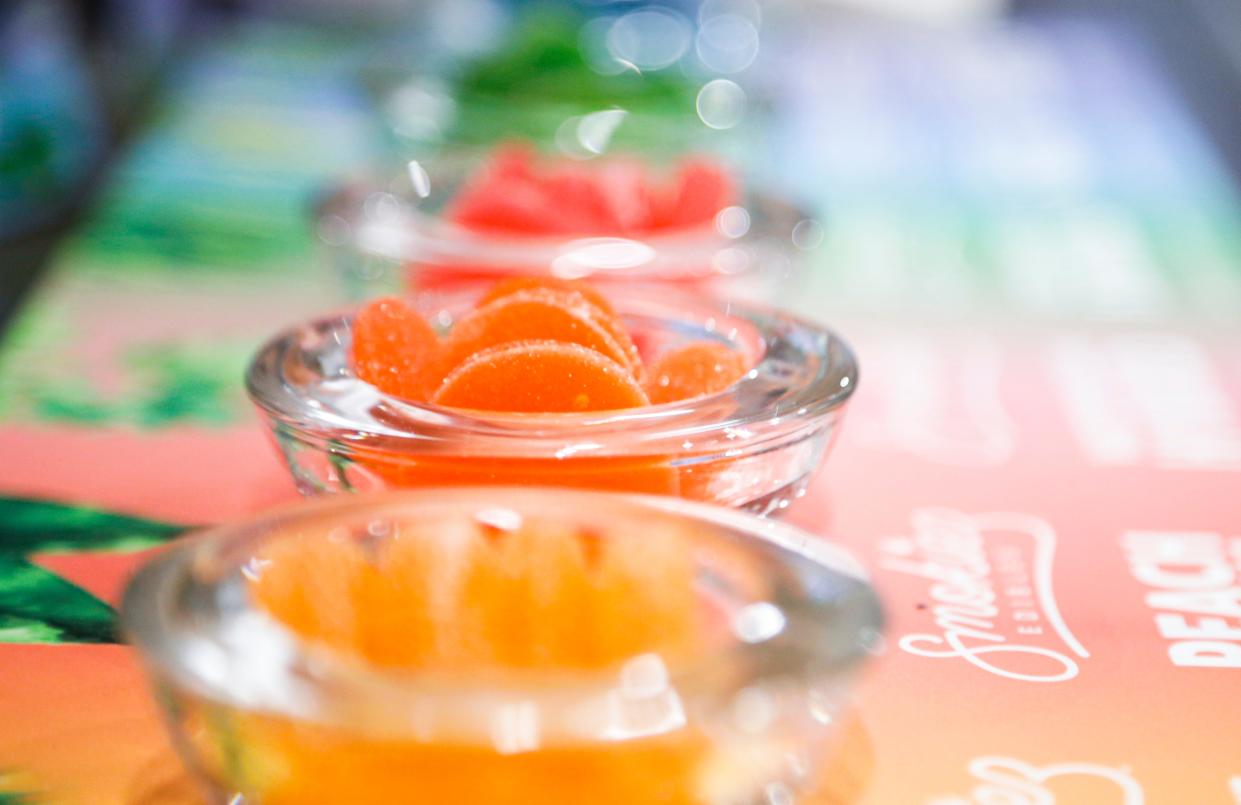They look like candy, but marijuana gummies not treat you want kids to have for Halloween
Dr. David Kling Jr. is a board-certified pediatrician and a pediatric emergency medicine fellow at Nationwide Children’s Hospital.
While working in the emergency department at Nationwide Children’s Hospital, I have cared for dozens of children who unintentionally ate edibles, thinking it was a safe snack or piece of candy.
Since medical marijuana became legal in Ohio in 2016, Ohio’s poison control centers have seen a surge in the number of children who have unintentionally ingested foods containing THC (tetrahydrocannabinol), the active component in marijuana.
Between 2019 and 2020, there was a significant increase in the number of unintentional ingestions of edible THC products, commonly known as “edibles,” and those numbers have continued to increase each year.
So far in 2023, the number of reported cases is on track to surpass the number of cases reported in 2022, specifically for children younger than 6 years old.
More: 'Marijuana is, in fact, a problem.' This drug component makes it addictive| Doctor
Nationwide Children’s Hospital and the Central Ohio Poison Center are raising awareness about the dangers THC edibles pose to children and spreading information about how to help keep them safe.
Marijuana edibles can be especially dangerous for children because they often look and taste like treats.
They can range from candies (like gummy bears) in various shapes, colors, and flavors to other snacks like brownies or chips. There are even drinks that contain THC.

Edibles contain variable amounts of THC, the active ingredient in marijuana resulting in its psychoactive effect. Because these products are often confused for other snacks and candy, and they can be particularly potent, children can ingest significantly high amounts of THC, which can lead to severe effects.
Children can experience a variety of symptoms after eating these products, ranging from drowsiness, confusion, unsteady gait, and vomiting to having difficulties breathing, seizures, becoming comatose and requiring intensive medical care and monitoring.
In many cases, parents do not know their child ate food containing THC. Some children arrive in the emergency department unable to walk, talk, or play, and their parents have no idea why.
Tests and imaging studies (e.g., CT scan of the brain) to figure out the cause of their symptoms can be scary to a child and are costly. Of all children who went to the hospital after an unintentional marijuana ingestion, nearly 60% of patients required some form of hospital-based intervention like blood work or intravenous fluids, according to the study Pediatric Edible Cannabis Exposures and Acute Toxicity: 2017-2021 published by the American Academy of Pediatrics.
The number of young children getting ahold of marijuana edibles is increasing and concerning medical professionals.
From 2017 to 2021, there was a 1,375% increase in the number of calls to U.S. poison centers about edibles exposures in young children, according to the study. The number of cases is not only increasing, but children are also becoming increasingly sick. In recent years, more children are requiring ICU level care after inadvertently eating edibles, which can mean breathing and medication support.

What can parents and caregivers do to keep children safe from marijuana edibles?
The best way to keep your children safe from marijuana edibles is to keep them out of your home. If you do have them in your home, treat all THC products like other substances and medications that are potentially harmful to children. All products should be stored up, away, and out of sight – in a locked cabinet or lockbox is best. Remember, while these products may not cause harmful effects in adults, they are not intended for use by children and, therefore, can be very dangerous to them.
Store these products away from other food. Don’t keep them near other snacks in the kitchen where they can easily be confused.
Have open conversations with family, friends, and households your child visits to ask if their household has any marijuana products. If they do, request the products to be safely stored when your child goes to visit.
Save the national Poison Help Line number (1-800-222-1222) in your phone and post it in a visible place in your home. Call right away if you have any questions or concerns about an ingestion. The Poison Help Line provides free, confidential advice from experts, 24 hours per day, seven days per week.
As a physician, I will continue to use my voice to spread awareness of this issue. I aim to have open conversations with the families of my patients about safe storage practices. However, more work is needed from all stakeholders to help address this growing issue.
Dr. David Kling Jr. is a board-certified pediatrician and a pediatric emergency medicine fellow at Nationwide Children’s Hospital. He is an advocate for medical education of medical students and residents, improving patient management in the emergency department, and child injury prevention.
Dr. Kling was supported in this piece by Leah Middelberg, MD (Pediatric Emergency Medicine) and Natalie Rine, PharmD (Central Ohio Poison Center).
This article originally appeared on The Columbus Dispatch: Protect your child from these dangerous 'treats' on Halloween and beyond
